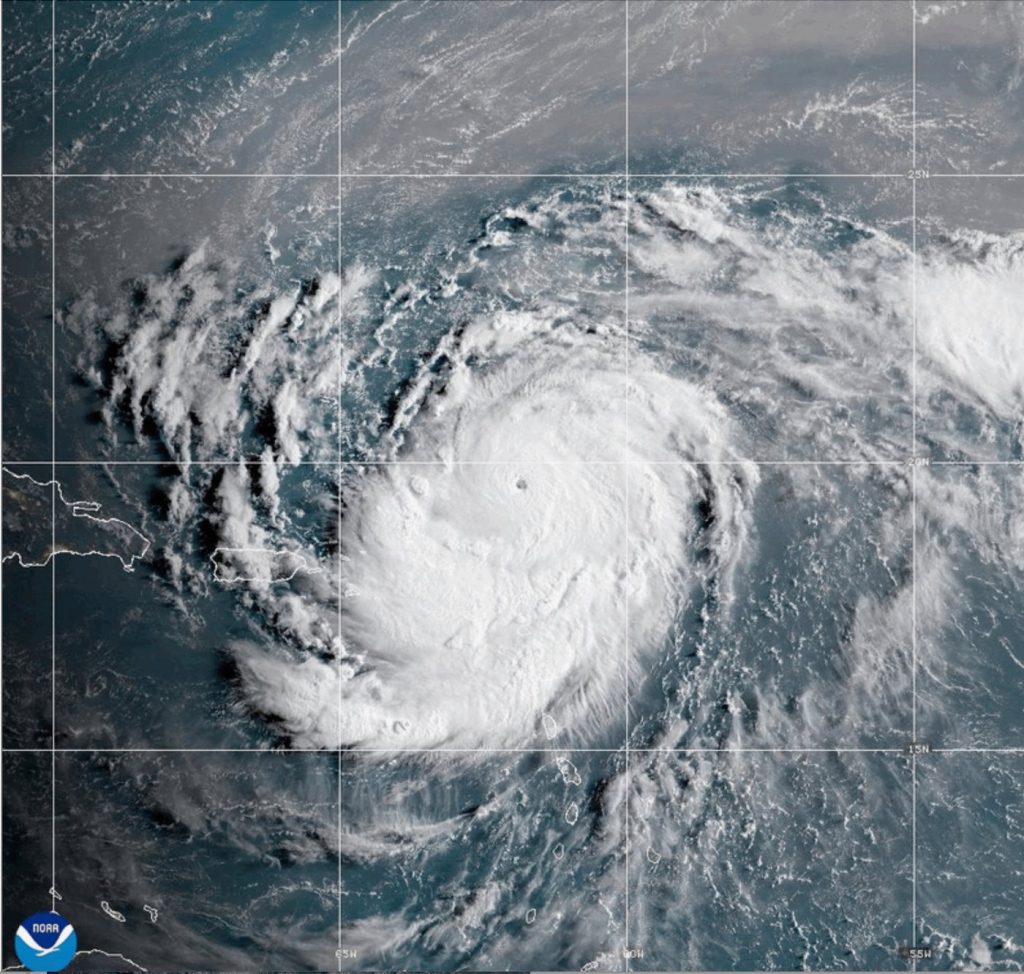SAN JUAN, Puerto Rico (AP) — Hurricane Erin rapidly intensified into a major hurricane over the Atlantic Ocean, just north of the Caribbean, on Saturday, August 16, 2025. The storm escalated from a tropical storm to Category 5 status within a single day, packing maximum sustained winds of 140 mph (220 kph), as reported by the National Hurricane Center located in Miami.
As night fell, updates indicated that while Erin was experiencing "structural changes," it remained a "formidable" storm, adversely affecting Puerto Rico and the Virgin Islands with heavy rainfall and powerful winds. At the time of reporting, the storm was located approximately 145 miles (230 kilometers) north-northeast of San Juan, Puerto Rico, moving west-northwest at a speed of 14 mph (22 kph). Fortunately, a direct landfall was not anticipated.
National Hurricane Center director Mike Brennen noted the extraordinary nature of Erin's rapid intensification, stating the hurricane's winds increased by an impressive 60 mph (96 kph) within about nine hours. Forecasters predicted that the storm would maintain its major hurricane status into the following week.
Despite the storm's projected trajectory, the National Hurricane Center issued alerts for potential flooding, landslides, and mudslides across parts of Puerto Rico. Tropical storm watches were also raised for the islands of St. Martin, St. Barts, and the Turks and Caicos. In response to the brewing storm, the National Weather Service in San Juan issued an alert for late Saturday night for approximately two-thirds of Puerto Rico, predicting winds of 50 mph (80 kph) and advising residents to seek shelter in secure locations. Power outages affected around 130,000 customers across the island.
On the day prior to the storm reaching its peak intensity, both locals and tourists engaged in daily activities around San Juan. Restaurants remained busy, and there were reports of people swimming in the ocean, despite official warnings. Two visitors from California, Sarahí Torres and Joanna Cornejo, explained they had decided to enjoy the beach due to calm weather conditions, saying, "The weather looked fine, so we came out." Parents, however, were on alert, keeping their children from swimming.
In a precautionary measure, the U.S. government deployed over 200 employees from the Federal Emergency Management Agency and other governmental agencies. Puerto Rico's Housing Secretary Ciary Pérez Peña confirmed that 367 emergency shelters had been inspected and were prepared to open if necessary. Meanwhile, officials in the Bahamas began making preparations for potential impacts from Erin.
Despite predictions that the storm would stay offshore, the presence of Hurricane Erin was expected to generate powerful rip currents along the U.S. East Coast from Florida to the mid-Atlantic region next week, according to Brennen. This year's hurricane season, running from June 1 to November 30, has already seen a high level of activity with Erin being the fifth named storm. Meteorologists expect between six to ten hurricanes during the season, suggesting that at least three to five could achieve major hurricane status with winds exceeding 110 mph (177 kph).
Hurricane specialist Michael Lowry remarked on the astonishing speed at which Erin transitioned from a tropical storm to Category 5 hurricane, especially for this time of year. Historically, only four other Category 5 hurricanes have been recorded in the Atlantic on or before August 16. The typical peak of hurricane season usually occurs mid-September.
In light of global warming, scientists have attributed the rapid intensification of hurricanes like Erin to climate change, which is causing an increase in ocean temperatures and atmospheric moisture. Such quickly intensifying storms present forecasting challenges for meteorologists and complicate emergency planning efforts for government agencies.
Erin's development, along with rapid intensifications, indicates shifting patterns in hurricane behavior, raising concerns about future storm characteristics as climate change continues to affect weather systems in the Atlantic.












